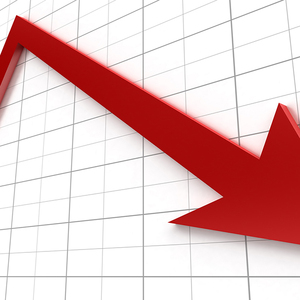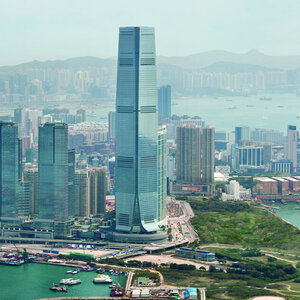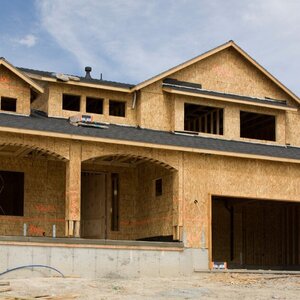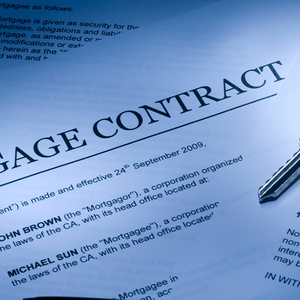The WPJ
THE WORLD PROPERTY JOURNALReal Estate Facts Not Fiction
Featured Columnists

Opportunities Emerging in UAE Office Market
Commercial News » Gulf Property Report | By Steve Morgan | August 14, 2013 8:21 AM ET
Much has been said in the press in recent weeks about the tremendous rebound being enjoyed by Dubai's residential market, which has prompted warnings from the IMF about the pace of the recovery. Capital values accelerated by nearly a fifth in the second quarter alone.
The office rental market, on the other hand, has been slow to reap the benefits of the economy's buoyancy. This is not only the case in Dubai, but neighbouring Abu Dhabi and Sharjah as well, although signs are now emerging that we may finally be on the cusp of a period of stability following four years of declining rents, which is crystallising opportunities for both landlords and occupiers.
In Dubai, office rental values still sit 69 percent below their third quarter 2008 peak and certainly have a long way to recover. But looking beneath the headline figure reveals that prime office rental values have posted their first increase in four-and-a-half years, rising by a modest 2.7 percent during the first half of 2013 after stagnating throughout 2012.
That said, this improvement is confined to select submarkets within central Dubai and where strata ownership barriers cannot hinder take up. Spawned during the boom years, strata ownership was an idea imported from Australia in order to make the office market more accessible to smaller investors by splitting large floor plates into multiple smaller units; however, this has now morphed into the single biggest challenge faced by Dubai's office market as occupiers shy away from the complexities of negotiations with multiple landlords for the take up of large amounts of space.
The irony of this stubbornly persistent attitude means that prime Grade-A office space is often overlooked by occupiers, despite the acute shortage of any space to satisfy some of the larger requirements in the market. This leaves individual owners of office schemes in the unique position of satisfying tenant requirements, while at the same time capitalizing on the first tangible increase in demand for space since before the financial crisis. It is these buildings which have driven the modest turn around in rental value growth rates and we expect this to continue, with iconic buildings such as Emirates Towers commanding even stronger interest due to the "prestige factor" and its location on the doorstep of the Dubai International Financial Centre, which has helped drive rents in the tower to between $76 and $82 (AED280 to AED300 psf).
In the Emirati capital of Abu Dhabi, the office market's supply pipeline remains clogged with schemes yet to complete, while occupier demand is lagging, which is translating into downward pressure on rents, particularly for older buildings in submarkets perceived to be more secondary. Prime Grade A lease rates are however holding steady at approximately $45 psf (AED158 to AED167 psf), buoyed by companies taking advantage of the relatively lower rents available in brand new modern schemes by relocating from older buildings.
Tenants are emerging as the clear winners in the battle for occupiers, with the resultant impact being further downward pressure on rents, which is likely to translate into ongoing rate declines, or stable rents for the more sought after schemes. While no immediate upturn in occupier requirements is anticipated, landlords are now in the unique position of being able to refurbish and renovate older properties in order to challenge some of the new schemes during void periods, thereby increasing their over all competitiveness in the long term.
Sharjah, which sits to the north east of Dubai, has a significantly smaller office market than both Dubai and Abu Dhabi; however it, too, did not escape the reach of the crisis, with office rents plunging to as low as $11 psf (AED 40) in Al Soor, in the city centre. Rents here have made somewhat of a turnaround, rising by 15 percent to approximately $13 psf (AED46), where they have stagnated over the past three quarters. In the highly sought after submarket of Al Majaz, located adjacent to Khalid Lagoon, rents fell to $15 psf (AED 55 psf) following the recession and have remained unchanged for the six quarters to the end of June.
Like Abu Dhabi, landlords in Sharjah have the opportunity to modernize and reposition empty office space. Unlike the UAE capital, the supply pipeline is more limited and with indirect government intervention in the form of The Heart of Sharjah project, the emirate's flagship urban regeneration plan, swathes of urban sprawl adjacent to Bank Street are being cleared and redeveloped, which is helping to support relocation activity, particularly from small and medium sized organizations that have traditionally clustered in that part of the city, creating a steady flow of occupiers for landlords to entice.
Steve Morgan is a partner in Cluttons. He is based in the United Arab Emirates, where he oversees commercial and residential valuation services for the Sharjah, Dubai and Abu Dhabi offices.
Sign Up Free | The WPJ Weekly Newsletter
Relevant real estate news.
Actionable market intelligence.
Right to your inbox every week.
Real Estate Listings Showcase
Related News Stories
Featured Columnists Real Estate Headlines
- Investment in Asia Pacific Multifamily Properties to Double by 2030
- Multi-story Warehouses Are 15 Percent of Sydney's New Industrial Stock
- Manhattan Office Leasing Activity Lags in Q3 as Sentiment Remains Cautious
- Nonresidential Construction Spending Increases in America
- Office Conversions on Pace to Double in U.S.
- Hong Kong Office Vacancy Rates Stabilize After 4 Months of Increases
- Commercial Mortgage Debt Outstanding in U.S. Jumps to $4.60 Trillion in Mid 2023
- Architecture Billings Index in U.S. Remains Flat in July
- Commercial Mortgage Delinquencies Rise in America
- U.S. Data Center Demand Explodes in U.S., Driven by AI Growth in 2023
- Demand for Electric Vehicle Manufacturing Space Jumps Across the U.S.
- Global Cross Border Commercial Property Capital Flows Implode 52 Percent Annually in 2023
- 2023 Financing Constraints Rapidly Drive Down Construction Starts in U.S.
- New York City Named as U.S. Leader in Climate Change Resilience
- Tokyo is the City of Choice for Global Retailers in 2023
- Despite VC Cooldown, Life Sciences Represents 33 Percent of New Office Construction in 2023
- Despite Reduced Credit, U.S. Multifamily Developer Confidence Remained Positive in Q2
- Brisbane Office Market Enjoying Strong Leasing Activity in 2023
- Commercial Lending Dampened in 2023 by U.S. Market Uncertainty
- Asia Pacific's Commercial Investment Market Continues to be Challenged in 2023
- Despite Global Economic Uncertainty, Commercial Investment in Japan Grew in Q2
- U.S. Commercial Lending to Dive 38 Percent to $504 Billion in 2023
- Apartment Markets Across America Continue to Stabilize in 2023
- Cap Rates for Prime Multifamily Assets in U.S. Stabilize in Q2
- Ireland Office Market Making a Comeback in 2023
- U.S. Office Sales Total $15 Billion Halfway Through 2023
- AI and Streaming Drive Global Data Center Growth Despite Power Constraints
- Asia Pacific Logistics Users Plan to Expand Warehouse Portfolio in 2023
- Manhattan Retail Rents Continue to Rise in Q2
- Manhattan Office Leasing Activity Down 29 Percent Annually in Q2
- Commercial Property Investment in Australia Dives 50 Percent in 2023
- U.S. Architecture Billings Uptick in May
- Employees Return to Office Trend Growing in Asia Pacific Markets
- Exponential AI Growth to Drive Asia Pacific's Data Center Market
- Large Opportunity to Transform Australia's Office Market in Play
- Australian Industrial Rent Growth to Continue in 2023
- Corporate Relocations in U.S. at Highest Rate Since 2017
- North American Ports Volume Drops 20 Percent Annually in 2023
- Office Investment in Asia Pacific Remains Strong Despite Weaker Sentiment
- Australia's Build-to-Rent Properties Uptick on Lender's Wish List in 2023
Reader Poll
Marketplace Links
This website uses cookies to improve user experience. By using our website you consent in accordance with our Cookie Policy. Read More





